Update: Public Permaculture Demo Garden Progress
When I founded the SC Upstate Permaculture Society I had no idea we’d be this popular, but we’re up to 644 members with multiple people joining each week. If you live in upstate South Carolina (or nearby) we welcome you to join us. Last October we broke ground on a huge new garden that is already stacking functions by being outreach to the community, an educational opportunity for school children, a seed & plant bank for SCUPS members, a wildlife corridor (especially for the endangered Monarch butterfly), a form of erosion control, a place for SCUPS members to practice permaculture, and a source of fresh food.
We’re calling it “Your Garden.”

Photo Caption: “What are you doing? Permaculture?” This is the eastern phoebe that follows me around in my home garden – which happens to be next door to the public demo garden. It didn’t take him (or her?) long to find me working in a new location. I really am as close to him as the photo appears.
It’s also going to be a bird sanctuary as we add native berry shrubs, insect habitat, bird houses, and bird feeders. I’ve recently written about some of our birding plans in this SCUPS blog post.
So far we’ve only had four member work days and there’s already a significant, “wow!” factor to the before and after photos, which you get to see after the jump:

Photo Caption: The photo on the left shows one section of the garden back in October when it was full of scrubby weeds and debris (plus a sterile strip of bare soil where herbicides were repeatedly sprayed). On the right you can see the beginnings of a food forest fedge (food hedge) with perennial fruit, nut, and flowering plants and mulched soil remediation. The green landscaping tape barely visible in the photo marks all the new plantings.
Before we started removing unwanted plants, I crawled through the dense jungle of brush and tied landscaping tape to particularly valuable species like mulberries, hickories, trifoliate oranges, black cherry, redbuds, 3 tea olives, and mature black locusts (which fix nitrogen and will act as scaffolding for heavy edible vines like muscadines and hardy kiwi). We then removed the tangle of less productive plants and replaced them with three mini swales and a cornucopia of delicious and useful plants. You can read even more about that at Sara Harding’s SCUPS blog post on the subject.
Truly, I cannot wait for spring to allow all the great plants we’ve put in to show their faces. Even better will be the results in three or more years of growth. Right now it’s harder to visualize the abundance and beauty that is to come.
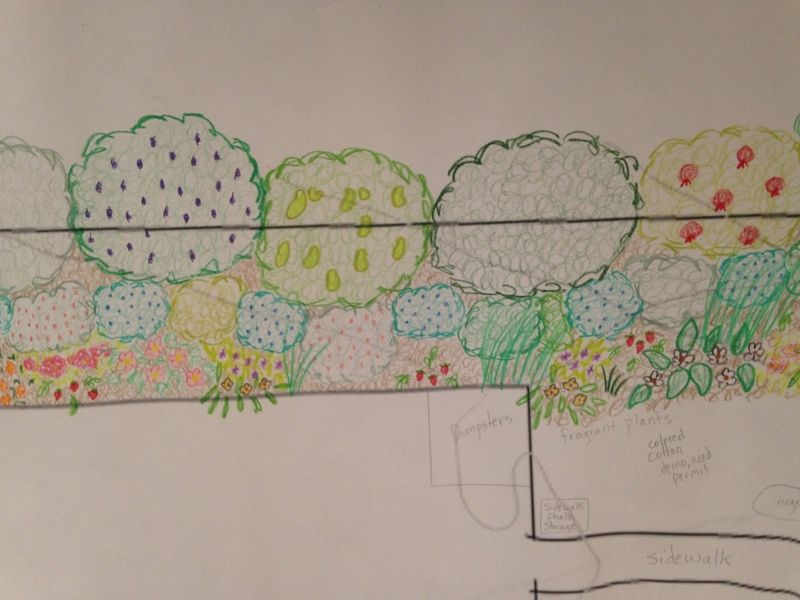
Photo Caption: All the plants at the demo garden so far were found or donated from members. Back when the initial design was being made, we didn’t know which plants to design in so I drew a quick guess at what the fedge might look like over time. Fedges are deliberately crowded — even though no one specimen will reach its peak performance, there is a greater overall harvest and more robust health.
We’ve tried to keep everything low-maintenance and fitted to the existing landscape. We knew a fedge would grow well where we designed it since it was already full of plants with similar growing patterns and needs. All we had to do was replace the less useful species with mostly edible ones!

Photo Caption: English ivy is one of the less useful species already present in our garden space. We’re removing it except in one section where it acts as an evergreen screen for the neighbors. As if to validate this decision, our eastern phoebe friend plucked a berry and ate it in front of me.
Though English ivy is a popular ornamental, it doesn’t play well with others. One of our current projects is removing it from the fedge and meadow areas of the design.
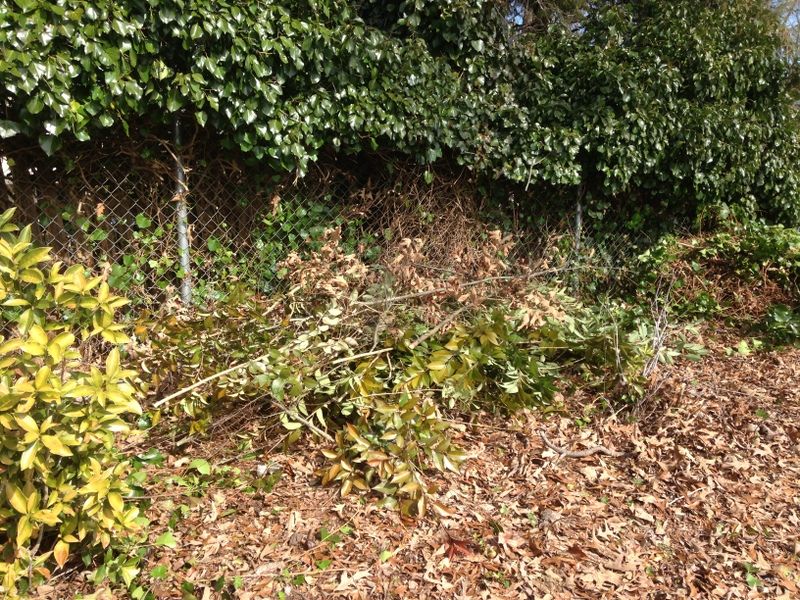
Photo Caption: We pulled the English ivy from the ground and pruned it halfway up the neighboring fence to make it more manageable. Since this spot is located on top of a tall retaining wall, we chose it as the location to allow the ivy to die from exposure before we compost it into lovely soil. We piled weed tree branches we’d pruned into a bier (shown above) and then laid the ivy to rest on top of it. The branches will prevent the dying ivy from touching the ground and re-rooting itself. Once dead, we’ll hide it under the mulch as biomass.
Pruning the ivy partway up the fence makes it easier to control on top of the retaining wall. Since it is a dry, south-facing terrace that drains well, our goal is to plant it with xeriscape species like agave, yucca, and prickly pear cactus. We definitely want to make sure the ivy is dead first since it is challenging to weed around spiny succulents.

Photo Caption: This ground-level view of the ivy bier on top of the retaining wall shows how it is less visible from the parking area. Even though permaculture is more focused on ecosystems than aesthetics, we are trying to conform to social landscape norms wherever possible to keep the neighborhood happy.
We also may plant some trailing sedums and hens & chicks at the front of the wall so they drape down and soften the edges.
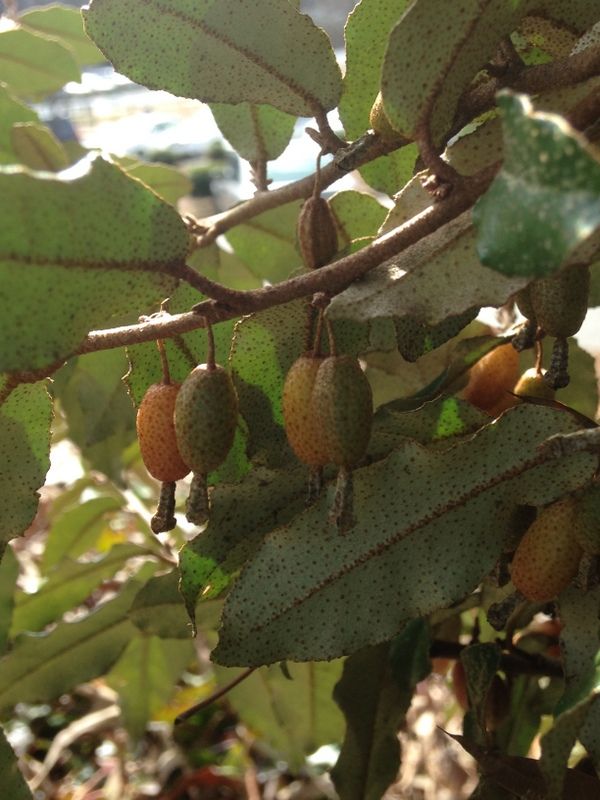
Photo Caption: We discovered 3 silverthorn shrubs with nearly ripe, edible fruit under the English ivy on top of the retaining wall.
Every time we work on this garden we discover even more useful plants that are already present on the site. This time it was three Elaeagnus pungens, or silverthorn shrubs. These nitrogen fixers are closely related to goumis and perfect for improving the soil in a difficult area of the design. Between a nearby thirsty oak tree and the high position & drainage, the soil on top of the retaining wall needs a lot of work. Best of all, these plants are already loaded with ripening berries that are tart and delicious.
Another great use for these berries is distracting birds from the plants we most want to eat. I wonder if our eastern phoebe friend likes silverthorn berries in between his larger diet of insects. Here he is visiting me in the garden, the video is split in 2 parts:
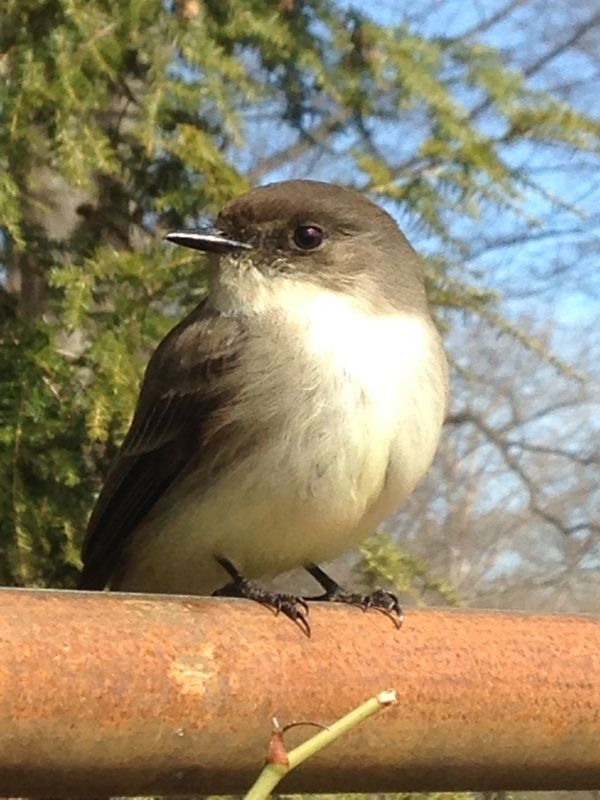
Photo Caption: Mr. Phoebe could be a Ms. – it’s very hard to tell the sexes apart with eastern phoebes. Here he is again sitting on the fence at the top of the retaining wall. I think he was hoping I’d dig and uncover some juicy grubs instead of pull vines.
The eastern phoebe wasn’t the only visitor. While I was pulling ivy off of the silverthorn shrubs, this mockingbird showed up to check out my progress:
We hope to include interpretive signage about the area bird species for the schoolchildren and neighbors to learn from.
In addition to the silverthorns, we also uncovered some eastern red cedars. Since there are already plenty of cedars in the neighborhood we plan to leave them as erosion control, evergreen interest, wildlife habitat, rot-resistant wood, and a source of edible juniper berries at the top of the slope. Eastern red cedar trees are a host for cedar apple rust, but since this airborne disease travels for miles, there is no real point in removing this lovely native.
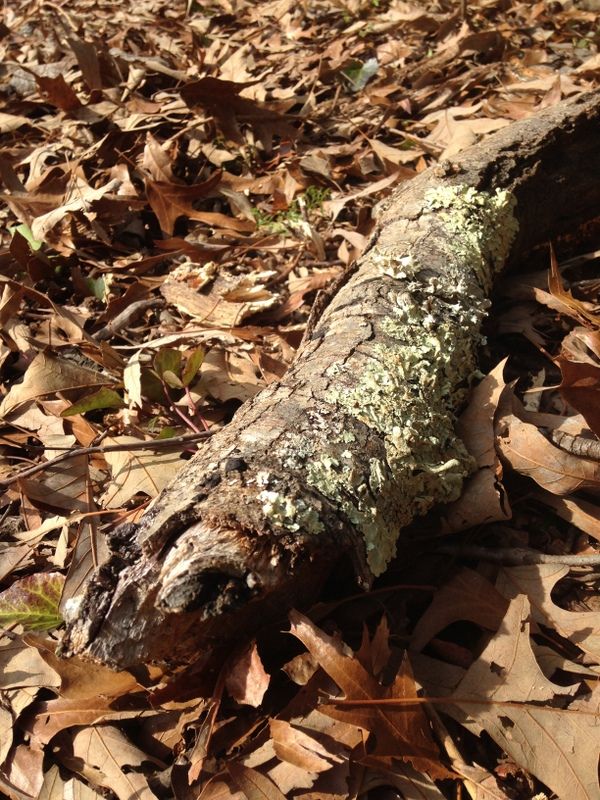
Photo Caption: A boon that most people overlook under old oaks are the rotting branches that fall. These are perfect for hugelkultur!
We also found lots of rotting logs on top of the retaining wall that we arranged to help improve the soil in that area. The giant oak tree towering to the north of the slope doesn’t shade the garden much, but it does rain down some quality biomass that we can use to improve the soil with organic matter.
Speaking of biomass, just as we were finishing the day’s work we were visited by the school principal. She’s delighted with our progress and asked about the wildflowers and strawberries portion of the design — she’d like for us to plant wildflowers in even more places around the school! There are a few good open areas near the front of the school that would be delightful planted in masses of beneficial insect attracting wildflowers. Here’s a slideshow of the areas with the most potential:
- Photo Caption: This strip of our garden will be planted in wildflowers and strawberries. We’re going to coppice the “weed” trees for a couple of seasons to keep the hillside soil stable while we establish other plantings.
- Photo Caption: Today the school principal approached me in the parking lot and mentioned she would like wildflowers in front of the school as well. This strip between the sidewalk and ball field would be ideal.
- Photo Caption: This is an area in front of the school that could use a section of wildflowers. We’d leave some lawn in this spot to make their sign accessible and allow student pedestrians a spot to wait for the crossing guard.
- Photo Caption: The non-shaded strip of land near the other driveway entrance would also be a good spot for wildflowers.
Finally, this post wouldn’t be complete without mentioning the most unusual visitor for this week’s Tuesday work day. Like Mary, Sara brought her week-old lamb to school so he could follow her everywhere she went (in a diaper… DAWWWW). He’s too young to be left alone and requires frequent feedings, so the only way she can get out at the moment is with an extra “child” in tow (too bad he isn’t a goat or we could call him an additional kid… har har). Behold the cuteness:

Photo Caption: Ivan is a week-old ram abandoned by his mama sheep. He’s getting exemplary care in his new home.
If you’re interested in becoming part of SCUPS so that this garden can be YOUR garden, it’s free and open to beginners. Click here to join. We have members from all over South Carolina and even a handful in Georgia, North Carolina, Virginia, and Tennessee. Most of our events occur in upstate SC.
2 thoughts on “Update: Public Permaculture Demo Garden Progress”
Comments are closed.


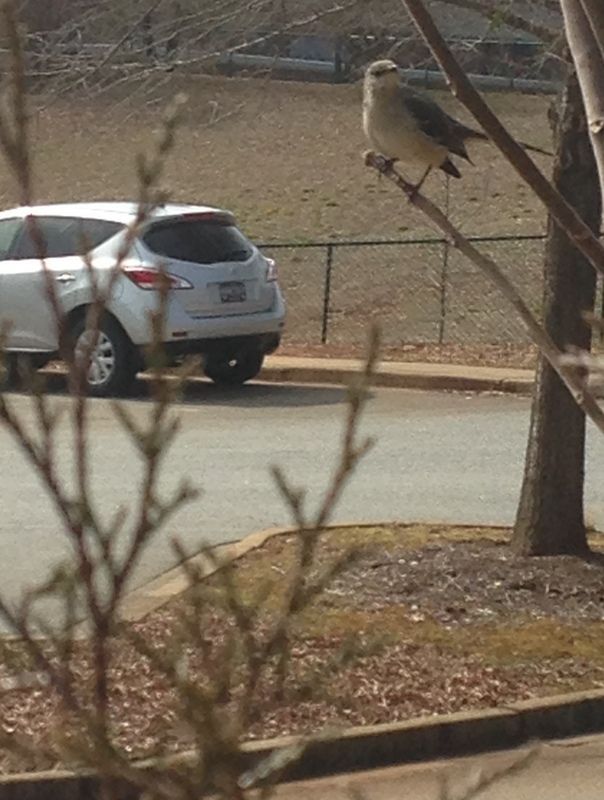
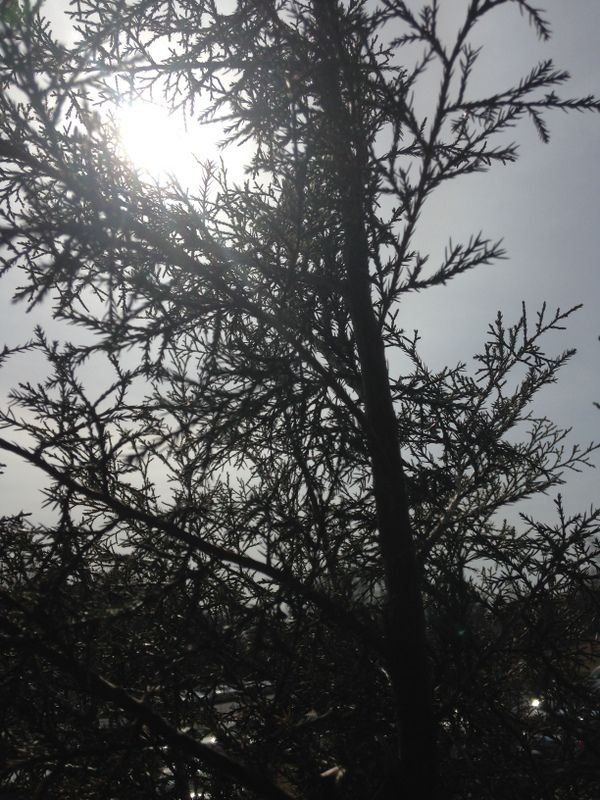
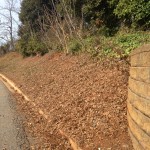
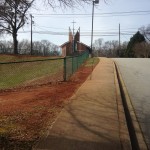
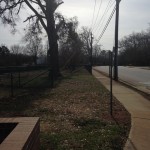


Mark Willis
Twitter: marksvegplot
- February 10, 2015 1:45 am
If lived in SC, I’d join! Sounds like you have created a very worthwhile and popular project. How about fungi? Have you found any useful ones in the garden?
Mark Willis´s last blog post ..Harvest Monday, 9th Feb 2015
Sara - February 10, 2015 9:14 am
That phoebe is sooooooooo cute!!!!
I am liking that principal already. Every time someone replaces Round-up with wildflowers, a hundred bees get their wings.